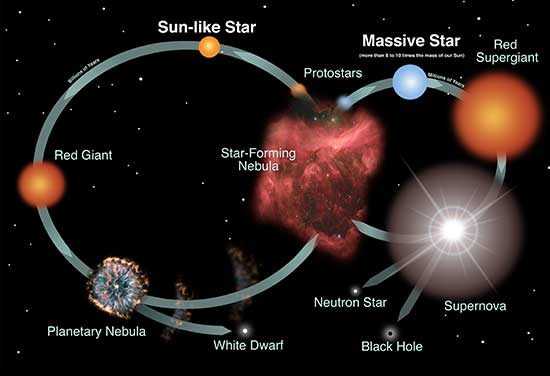
How Do Stars Produce Energy: Unveiling the Cosmic Furnaces
Stars, those brilliant celestial objects that dot the night sky, are not just captivating points of light; they are the cosmic engines that drive the universe’s energy production. They are colossal, luminous spheres of gas that continuously generate mind-boggling amounts of energy through a process known as nuclear fusion. In this in-depth exploration, we will unravel the intricate mechanism by which stars, including our own Sun, produce energy and sustain life as we know it.
The Birth of Stars
Before diving into the energy production process, it’s essential to understand how stars come into existence. Stars are born from vast regions of gas and dust within galaxies, known as stellar nurseries. These nurseries are often triggered into action by various mechanisms, such as the shockwaves from nearby supernovae or gravitational interactions between gas clouds.
As these clouds collapse under the influence of gravity, they fragment into smaller clumps, which eventually form protostars. Protostars are young stellar objects that are not yet undergoing nuclear fusion. They primarily generate energy through gravitational contraction, converting gravitational potential energy into heat and radiation.
Nuclear Fusion: The Heart of Stellar Energy Production
The core of a star is where the magic happens – it’s the site of continuous nuclear fusion, the process that powers stars and keeps them shining brightly for billions of years.
Step 1: Hydrogen to Helium
The primary fuel for stars is hydrogen, the most abundant element in the universe. Within a star’s core, extreme temperatures and pressures cause hydrogen atoms to collide with such force that they fuse together, forming helium. This fusion process is incredibly energy-efficient and follows a series of steps:
- Proton-Proton Chain: In stars like our Sun, the proton-proton chain is the dominant fusion process. Four hydrogen nuclei (protons) come together to form one helium nucleus. Along the way, positrons, neutrinos, and gamma-ray photons are produced, releasing a tremendous amount of energy.
Step 2: Balancing Act
Stars exist in a delicate balance between two opposing forces:
- Gravity: Gravity relentlessly pulls the star’s mass inward, attempting to contract it into a smaller volume.
- Radiation Pressure: The energy generated by nuclear fusion exerts an outward pressure, pushing against the force of gravity.
Stellar Evolution: A Lifelong Journey
A star’s life is not a static affair. It goes through various stages, each characterized by the balance between gravitational collapse and nuclear fusion.
- Protostar: In the initial stages, a protostar generates energy primarily through gravitational contraction. As it continues to collapse, it heats up.
- Main Sequence: The majority of a star’s life is spent in the main sequence phase. During this stage, hydrogen is steadily converted into helium through nuclear fusion in the core. Our Sun, for instance, is currently in the middle of its main sequence phase and has been for about 4.6 billion years.
- Red Giant or Supergiant: As a star exhausts its hydrogen fuel, the core contracts while the outer layers expand, causing the star to swell into a red giant or supergiant, depending on its mass.
- Nuclear Fusion Beyond Helium: In more massive stars, fusion continues, creating heavier elements such as carbon, oxygen, and even iron. These elements are vital for the formation of planets and life as we know it.
- Supernova: In the final stages of massive stars’ lives, the core collapses under immense pressure, leading to a supernova explosion. This explosion disperses heavy elements into space, which can later contribute to the formation of new stars and planetary systems.
The End of the Stellar Journey
A star’s life eventually comes to an end. The fate of a star is determined by its mass:
- Low-Mass Stars: Stars with masses similar to or less than that of our Sun will eventually become white dwarfs. These are incredibly dense, Earth-sized remnants of a star’s core.
- Massive Stars: Massive stars, with several times the mass of the Sun, undergo spectacular explosions, such as supernovae, and may leave behind neutron stars or even black holes.
Conclusion
Stars are the cosmic furnaces that produce the energy essential for life in the universe. Through the miraculous process of nuclear fusion, these celestial giants transform simple hydrogen atoms into helium, releasing colossal amounts of energy in the process. Understanding the life cycle of stars, from their birth in stellar nurseries to their explosive deaths, is fundamental to comprehending the evolution of galaxies, the formation of elements, and the very existence of life itself on our planet and beyond. As we gaze at the night sky, we can appreciate that stars are not just distant specks of light but the luminous engines that drive the cosmic drama of the universe.
